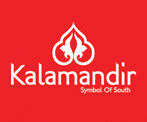 Zerodha (Trading & Demat Account)
Zerodha (Trading & Demat Account)
FREE Equity Delivery and MF
Flat ₹20/trade Intra-day/F&O
 Zerodha (Trading & Demat Account)
Zerodha (Trading & Demat Account)
FREE Equity Delivery and MF
Flat ₹20/trade Intra-day/F&O

|
|

Review By Naman Securities and Finance Pvt. Ltd on February 12, 2013
Sai Silk (Kalamandir) Ltd, a retailer of sarees and jewellery operating primarily in southern India, has come out with an IPO to raise Rs 89 crs for meeting long term working capital requirements, expanding its retail footprint, carrying out brand promotion, and pre-paying debt. The issue, which opened yesterday, will close on the 13th February 2013. The price band has been fixed at Rs 70-75 per share. What makes this issue unique is that the promoters have opted for the safety net scheme. In this scheme, the promoters stand ready to buy back shares from retail investor applicants should the price fall below the issue price within a specified time frame.
Safety-net scheme, background and implications
SEBI came up with the idea of the safety net scheme intending to protect retail investors in IPOs. Excerpts from the SEBI document read 'In the analysis of price performance of the scrips listed during 2008 to 2011, it was observed that out of 117 scrips, 72 (around 62% issues) were trading below the Issue price after 6-months of their listing. Out of those 72 scrips which witnessed fall in price, in 55 scrips the fall was more than 20% of the Issue price. In this scenario if the trend continues, the sentiments of the investors would get affected and they may lose confidence in the capital market. Thus, there is a need to provide Safety Net arrangement for RIIs to build their confidence in capital market.'
The safety net scheme - If at any point in time, within 6 months from the credit of shares to your demat account, the stock price falls below the issue price, say Rs 75 in this case, the promoters will buyback maximum of 1000 shares at Rs 75 per share. This definitely sounds like a no-loss situation for a period of 6 months. However, is it worth a try for this IPO? I would say no. It is very likely that the stock will be 'managed' at levels marginally above Rs 75 for next six months to avoid triggering the safety net. I say 'marginally' above because, in my opinion, the stock is already expensively valued given its average fundamentals; this I will elaborate later in the post. Hence, I will be sitting on returns of 0-1% for the six months, post which the stock is likely to fall owing to profit booking and expensive valuations. The other situation is where the stock price falls and I get my money back - without the interest that I could have made for whatever little time my funds were locked in. In contrast, I stand to make much better risk adjusted returns by simply parking funds in a term deposit with a commercial bank.
Usher Agro, which got listed in October 2006, was the first company to offer this scheme. The issue price was fixed at Rs 15 per share. A look at the stock price performance for the first six months of listing reveals that the stock, for a large part of the time, was trading below the issue price of Rs 15. This definitely would have induced investors to tender their shares for buyback in the safety net scheme.The red line depicts the share price at Rs 15 in both the charts.
Nevertheless, the safety net scheme is beneficial for retail investors as it provides some amount of protection from downside risk for a limited period; but that alone may not be reason enough to subscribe to an IPO! Fundamentals and valuations, like always, should remain the drivers for any IPO investment decisions.
Valuations expensive; avoid the IPO
According to my estimates, the company is likely to report an EPS, based on weighted average number of shares, of Rs 6.2 for FY13. At the price band of Rs 70-75, the PE multiples are 11.3x-12.1x. Since there is no directly comparable listed player, I use my fair value estimates for V Mart for comparison. V Mart and Sai Silk have the following similarities - both are regional retail players, V Mart is concentrated in the north, while Sai Silk stores are located in the south, both earn 60% of revenues from apparel, both have grown at healthy pace in terms of revenues and profits in the past and have similar revenues (~ Rs 260-280 crs), margins (EBITDA margins of ~11%) and returns (RoE of ~22%) profile. In my IPO review of V Mart, I applied a PE multiple of 13-13.5x for arriving at the fair value estimate. In my opinion, Sai Silk should trade at a 15% discount to V Mart's PE multiple of 13x owing to: i) V Mart has three times the retail store presence as Sai Silk and a higher brand recall ii) V Mart continues to focus on its core business, while Sai Silk has has diversified into unrelated area of wind power generation iii) V Mart has limited related party transactions and relatively better corporate governance practices.
Applying a PE multiple of 11x, I arrive at a fair value estimate of Rs 68 per share for Sai Silk, which indicates that the issue price has a marginal downside potential. Hence, I recommend avoiding the IPO.

Review By Naman Securities and Finance Pvt. Ltd on February 12, 2013


FREE Intraday Trading (Eq, F&O)
Flat ₹20 Per Trade in F&O
|
|